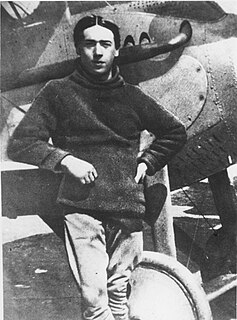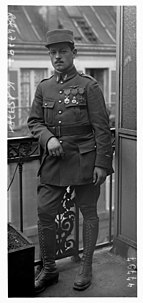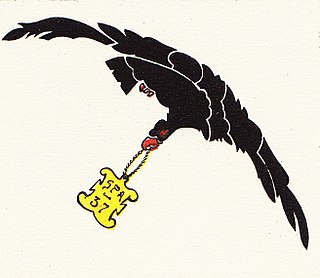Related Research Articles

Sous Lieutenant René Pierre Marie Dorme, Légion d'honneur, Médaille militaire, Croix de Guerre was a French World War I fighter ace credited with at least confirmed 23 victories.

Colonel Marcel Émile Haegelen, Légion d'honneur, Médaille militaire, Croix de Guerre, was a World War I French flying ace credited with 22 victories.
Sous LieutenantNoël Hugues Anne Louis de Rochefort was a French World War I flying ace credited with seven aerial victories. He was one of the original French aces.

Captain-Commandant Fernand Maximillian Leon Jacquet was a World War I flying ace credited with seven aerial victories. He was the first Belgian pilot to score an aerial victory, on 17 April 1915, and became the first Belgian ace on 1 February 1917. He was also the first Belgian pilot to fly his king to the front, in 1917. Additionally, he was the only Belgian honored by the British with a Distinguished Flying Cross.

Lieutenant Jean Chaput was a French World War I flying ace credited with 16 aerial victories.

Capitaine Mathieu Marie Joseph Antoine Tenant de la Tour was a French World War I flying ace credited with nine aerial victories. He scored one of the first aerial victories over an observation balloon.
Major General Joseph Marie Xavier de Sévin began his military career as a World War I flying ace credited with twelve confirmed aerial victories, as well as thirteen unconfirmed ones. He rose to the rank of major general while serving until World War II.
Sous Lieutenant Lucien Joseph Jailler was a French World War I flying ace credited with twelve confirmed and eight unverified aerial victories.

Adjutant Maxime Albert Lenoir was a pioneering World War I flying ace credited with eleven confirmed aerial victories, as well as eight unconfirmed.
Capitaine Gustave Victorin Daladier was a French World War I flying ace credited with twelve aerial victories. He would continue in his nation's military service after World War I.
Sous Lieutenant Marcel Joseph Maurice Nogues was a World War I flying ace credited with thirteen aerial victories. He was an ace over enemy observation balloons, as well as enemy airplanes.
Major Adrien Louis Jacques Leps was a French World War I flying ace credited with twelve confirmed aerial victories, as well as two probables. He served originally in the cavalry, before shifting to flying. In later years, he served under General Armand Pinsard during World War II.
Capitaine Jean Georges Fernand Matton was a French World War I cavalryman and flying ace. He was credited with nine confirmed and two unconfirmed aerial victories.
Escadrille 62 is a French Air Force squadron. It was founded on 11 August 1915 at Lyon–Bron Airport.
Escadrille 67 of the French Air Force was founded at Lyon-Bron Airport during the First World War, on 17 September 1915. On 24 September, they were assigned to the IV Armee of the French Army. By late October, the escadrille was assigned to the defense of Verdun.

Escadrille 23 of the French Air Force was formed at Brie on 4 August 1914.

Escadrille 37 of the French Air Force was established at Chateauford, France in January 1915. Its original equipment of Morane-Saulniers led to its original designation of Escadrille MS 37.
Escadrille Spa.69 was a French fighter squadron derived from one of its military's oldest aviation units. Active from September 1915 until the 11 November 1918 Armistice, the escadrille campaigned on both the Western and Italian Fronts with X Armee. It was credited with 38 aerial combat victories.
Escadrille Spa.88 was a French fighter squadron active for the final 20 months of the First World War. It spent 1918 as part of Groupe de Combat 13, being Mentioned in dispatches three times, granted the Fourragere of the Croix de Guerre, and credited with 32 enemy airplanes and four observation balloons destroyed.
Escadrille Spa.153 was a French fighter squadron active from 1 July 1917 to war's end. It was Mentioned in dispatches for its proficiency. By the Armistice, the squadron was credited with 10 German airplanes and three observation balloons destroyed.
References
- Over the Front: A Complete Record of the Fighter Aces and Units of the United States and French Air Services, 1914-1918 Norman L. R. Franks, Frank W. Bailey. Grub Street, 1992. ISBN 0-948817-54-2, ISBN 978-0-948817-54-0.